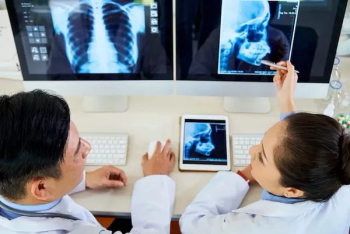
Tenth annual symposium bets on Vegas
Excitement is never in short supply in Las Vegas. But a new session at the 2008 Stanford International Multidetector-Row CT Symposium may give the casinos, cocktail lounges, and Canadian circus acts a run for their money.
Dr. Geoffrey Rubin
Excitement is never in short supply in Las Vegas. But a new session at the 2008 Stanford International Multidetector-Row CT Symposium may give the casinos, cocktail lounges, and Canadian circus acts a run for their money.
"I am excited about a new feature we are introducing to the meeting this year, entitled 'Case Conference with the Professor,' said Dr. Geoffrey Rubin, program cochair. "This will offer a learning experience that more closely mirrors clinical practice and, we hope, should convey nuances that are not easily gleaned through lecture format."
The case conference consists of 90-minute interactive sessions during which about 20 participants directly examine CT images on individual workstations. The findings are then discussed under the supervision of an expert moderator. Tuesday's case conference topics included musculoskeletal, cardiac imaging, and PET/CT. Pancreatic masses and lung cancer screening are on tap for later in the week.
"The intent is to have it be somewhat representative of the spectrum of CT practice," said Rubin, who is the chief of the cardiovascular imaging section and medical director of the 3D Laboratory at Stanford University School of Medicine.
The introduction of case conferences is just another change that the 10-year-old symposium has undergone. The most obvious, of course, is the relocation from San Francisco to Las Vegas.
"It is surprising, but there are not enough large hotels with sufficient conference facilities (in San Francisco) to accommodate the needs of our complex meeting," Rubin said. "Las Vegas was chosen as a destination that is easily reached from many locations, both within the U.S. and abroad."
Whether they are first-timers or meeting veterans, the roughly 1000 attendees at this year's four-day symposium can look forward to the latest developments in state-of-the-art CT, according to Rubin.
Talks that focus on early experiences with newer technologies should be particularly enlightening, he said. One discussion on perfusion in CT oncology imaging features Dr. Axel Küttner from the University of Erlangen in Germany, and another highlights Dr. James Earls' experience with cardiac prospective gating in 2000 patients at the Inova Heart and Vascular Institute in Falls Church, VA. Rubin himself will give a lecture on enterprise-wide 3D.
"The last few years-in particular, the last year-have seen a remarkable acceleration in the technical development of CT scanners as well as the diversity of those technical developments," Rubin said. "Our goal in creating the program is to expose our participants to the full spectrum of what is new and exciting in CT, from the perspective of technical advances, novel applications, evidence-based practice, and trends in workflow and practice patterns."
For more information from the Diagnostic Imaging archives:
Newsletter
Stay at the forefront of radiology with the Diagnostic Imaging newsletter, delivering the latest news, clinical insights, and imaging advancements for today’s radiologists.




